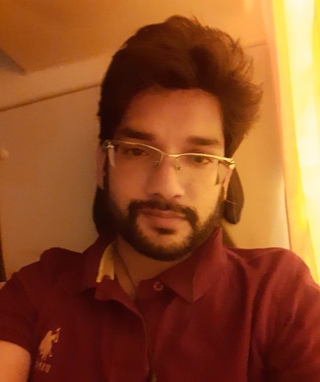
Dr. Vipal Kumar Sharma Assistant Professor (SG) (91)01792-239304 vipul.sharma@juit.ac.in, vipul01sharma@gmail.com For More Information Click here
Dr. Vipal Kumar Sharma is currently working as an Assistant Professor (SG) in Department of Computer Science & Engineering/Information Technology, Jaypee University of Information Technology, Waknaghat Solan. He has done his B.tech in CSE (Hons) from Lovely Professional University in the year 2011. He has completed his Ph.D at National Institute of Technology, Srinagar in the year 2021. Before joining JUIT, he worked as an Assistant Professor (on contract) in National Institute of Technology Srinagar for 2.5 years. He is having around 4 years of teaching experience in total. He has published around 16 research papers in various reputed journals. He is having 5 SCI papers in reputed international journals like Pattern Recognition Letters (Official Mouthpiece of International Association of Pattern Recognition), Pattern Recognition, JKSUCIS, Computer Science Reviews etc. He has qualified GATE Exam four times, with latest in the year 2018 securing an AIR of 1453. Also he cracked UGC NET Exam twice in July 2019 and December 2020. He has also cracked JKSET (Jammu & Kashmir State Eligibility Test) exam in the year 2018. His research interests include, Computer Vision, Deep learning, Steganography & Pattern Recognition.
Open Project Titles:
1. Integrated mWMM based novel capability for object identification and recognition.
Due to RGB-D camera's ability to produce high-quality colour images and depth maps, object identification and recognition have made significant advancements during the past ten years. They make it simple for artificially intelligent machines to identify items and make decisions in real time based on the situations provided. The effectiveness of object detection and recognition can be enhanced by depth cues. Using two RGB-D datasets, we will be developing new object detection methods. In this project we will derive picture normals from depth maps and then apply Modified Watson Mixture Model for clustering. It can be difficult to manage Modified Watson Mixture Models when the image quality is poor, to manage that we will segment images based on depth cues. The segmented images are then used to extract a variety of features.
2. Synthesis of medical images for data augmentation using limited amount of training data.
Image synthesis techniques have only been used to a limited extent in the medical field because of their lack of authenticity and accuracy. Synthesizing many outputs is a challenge when the training data is little, as it is in many medical datasets. In this project we will be developing a Nominal Generative Adversarial Network (Nominal GAN), an image-to-image network that seeks to synthesise annotated, precise, and diverse medical images with less training data. Throughout the self-coding process, the key goal is to fully utilise the image's intrinsic information and to keep the details and the content distinct. Therefore, in order to produce a variety of high-precision images, the generator is compelled to concentrate on each feature and detail independently.
3. Content adaptive image steganography using adversarial perturbation.
Content-adaptive adversarial steganography is used to improve steganography security by adaptively adding perturbations to cover images while considering image contents with rich texture, where perturbations are generated using adversarial example generation methods like the fast gradient sign method. In this project, we will initially create a hybrid texture descriptor to describe texture regions by using better local binary patterns based on multi-grained gradient information and the noise residual feature to describe texture regions. The input image is then divided into different sections using local semantics using a segmentation approach called simple linear iterative clustering. Finally, using the hybrid texture descriptor and segmentation results, a weighted mask is created, which may be used to determine the best spots for applying adversarial perturbations of various weights to generate more secure adversarial cover images.
4. Deep video dehazing without explicit alignment estimation.
There are two key objectives to achieve when dealing with video dehazing: how to align neighbouring frames to the reference frame and how to restore the reference frame. We will be developing a progressive alignment and restoration method for video dehazing. Without using optical flow estimation, the alignment procedure aligns subsequent surrounding frames one by one. The restoration method not only uses a refinement network to increase the dehazing performance of the entire network, but it also does so under the alignment process. Four fusion networks and one refinement network are among the proposed networks we will be using. Three fusion networks at the first fusion stage share the same parameters to reduce network parameters.